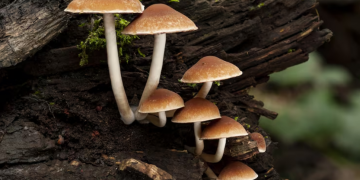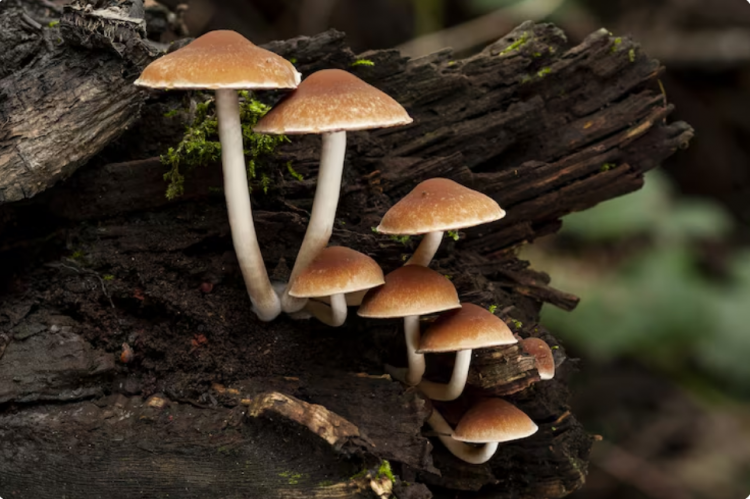Lion’s Mane mushrooms have become one of the most exciting ingredients in modern kitchens. With their distinctive shaggy appearance, mild seafood-like flavour and growing list of potential health benefits, they are a favourite among chefs, foodies and home cooks alike. But beyond eating them fresh, more people are now discovering the joy of growing Lion’s Mane mushrooms at home.
Whether you are looking for a new kitchen hobby or want to produce fresh, gourmet mushrooms right in your own space, growing Lion’s Mane is easier than you might think. With the right setup and a little patience, you can enjoy the full growing cycle and harvest your own delicious mushrooms.
In this guide, we’ll explain how to grow your own Lion’s Mane mushrooms at home, including what you’ll need, how to care for them, and what to expect along the way.
Why Grow Lion’s Mane at Home?
Before diving into the how-to, let’s look at why home growing is so appealing:
- Freshness: Homegrown mushrooms can be harvested at peak ripeness and cooked immediately, offering unmatched flavour and texture.
- Simplicity: Unlike other food crops, mushrooms do not require sunlight or outdoor space.
- Sustainability: Growing your own food at home reduces packaging waste, food miles and reliance on mass supply chains.
- Satisfaction: Watching a mushroom develop from a small white blob to a fully grown Lion’s Mane is a rewarding experience.
- Education: It’s a great way to understand the food-growing process, whether for personal interest or learning with children.
What You’ll Need
The easiest way to get started is with a ready-to-use mushroom grow kit. These kits are pre-inoculated with Lion’s Mane mycelium (the root-like structure of fungi) and come with simple instructions to help you get started quickly and successfully.
You can order a Lion’s Mane Grow Kit from Merit Mushrooms, which includes a high-yield block, a recipe card, and a free spray bottle for daily misting.
In addition to the kit, you’ll need:
- A clean indoor space with good airflow
- A spray bottle (provided)
- A small tray or plate to catch excess moisture
- Access to fresh air (hallways, living rooms or dining areas work well)
Avoid growing in bathrooms or poorly ventilated areas, as excess moisture can increase the risk of mould.
Step-by-Step: How to Grow Lion’s Mane MushroomsStep
1: Open the Kit at the Right Time
When your grow kit arrives, it’s important to open it within five days of dispatch to ensure the mycelium is still healthy and active. If you cannot open it right away, contact the supplier for advice on short-term storage.
Once ready, cut open the grow bag following the included instructions. Most kits recommend a cross-shaped slit or small opening in the bag’s surface. This is where the mushrooms will fruit.
Step 2: Position Your Kit
Place the kit in a clean, open space with natural airflow. Unlike plants, Lion’s Mane mushrooms do not need light, but they do need fresh air and oxygen to develop properly. Avoid sealed cupboards, windowsills in direct sunlight, or areas near heaters.
Suggested spots include:
- Living rooms
- Dining areas
- Hallways
- Shelves near open windows (with indirect light)
High oxygen and low carbon dioxide levels are key to healthy growth, so fresh air is more important than lighting.
Step 3: Start Misting
Use the spray bottle to mist the opening of the bag 2 to 3 times per day. This keeps the surface humid, which is essential for encouraging mushroom growth. Make sure the area stays moist but not soaked.
Your goal is to maintain a damp microclimate around the fruiting site. Placing a plastic bag loosely over the kit (with holes for ventilation) can help retain humidity in dry rooms, but make sure not to trap stale air inside.
Step 4: Watch for Growth
In the first few days, not much will happen — but be patient. Tiny white nodules should start to form around the slit, usually within 5 to 10 days. These will gradually expand into the soft, furry fronds that make Lion’s Mane so recognisable.
Once the mushroom begins forming, you will need to continue misting until harvest. This includes before, during and after the visible growth. Maintaining a moist surface helps the mushroom develop evenly and prevents it from drying out or stopping prematurely.
If your kit shows no signs of growth after 14 days, contact your supplier for support. Some environmental factors (temperature, humidity, ventilation) may cause delays.
Step 5: Harvesting
Lion’s Mane mushrooms are ready to harvest when:
- They have reached the size of a large fist or grapefruit
- The “spines” or fronds are starting to elongate
- The mushroom is firm and pale, but not overly soft
Gently twist or cut the mushroom at the base using a clean knife. Avoid pulling too hard, as this can damage the remaining mycelium and affect future flushes.
Freshly harvested Lion’s Mane can be cooked immediately or stored in the fridge for a few days. For best flavour, use it fresh and pan-fry until golden.
Step 6: Continue Misting for a Second Flush
After the first harvest, you can continue misting daily to encourage a second crop. Some kits may produce two or even three flushes if the conditions are right. However, the first harvest is usually the largest, and subsequent growth depends on the environment and how well the block is cared for.
If the block dries out completely or becomes contaminated with mould, it may be time to compost it and order a new kit.
Tips for Success
- Mist consistently but do not over-soak
- Maintain good airflow but avoid strong draughts
- Avoid placing the kit in direct sunlight
- Do not grow in a sealed box or plastic tub without ventilation
- Use clean hands or tools when handling the kit or harvesting
- Reach out for help if growth is slower than expected
What If Nothing Happens?
While Lion’s Mane is generally easy to grow, it is still a living organism that responds to its environment. Temperature fluctuations, low humidity, or stale air can sometimes slow things down. If in doubt, it is always better to reach out for advice rather than assume the kit has failed.
Most suppliers offer growing support and may be able to guide you through adjustments to encourage growth. Following the instructions closely and keeping the kit in a well-ventilated space are the most important steps.
Final Thoughts: A Unique Growing Experience
Growing your own Lion’s Mane mushrooms is more than just a fun experiment. It is a chance to engage with food in a hands-on, meaningful way. Watching a mushroom grow from mycelium to full fruiting body is a satisfying experience that connects you to nature and the food you eat.
Best of all, it is achievable in any home — no garden, allotment or green thumb required. Whether you are a foodie, a mushroom enthusiast or someone looking for a new indoor hobby, a grow kit offers a simple, sustainable and rewarding way to enjoy one of the most intriguing gourmet mushrooms available today.

















